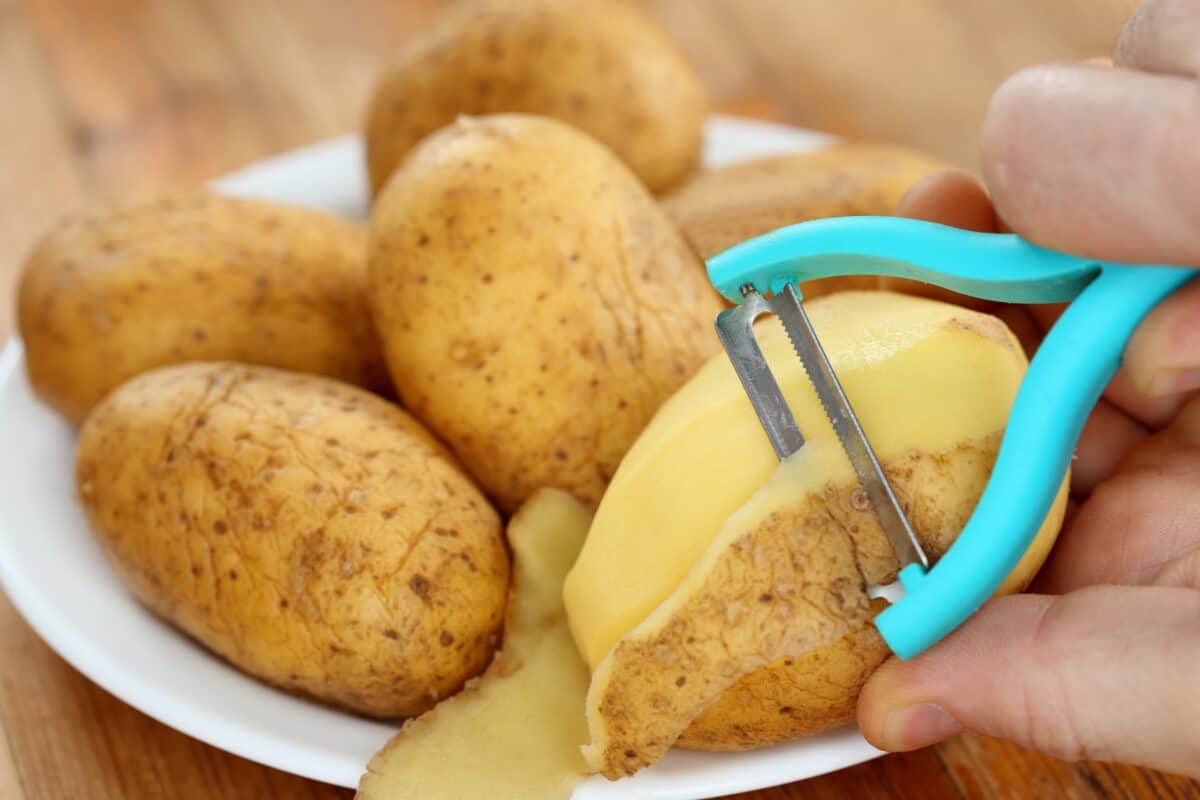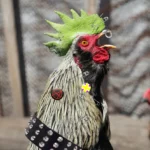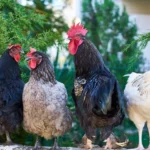Got chickens and a mountain of potato peels? Wondering if they’re a safe snack for your feathered friends? This guide covers everything you need to know about feeding potato peels to your flock, from the potential risks to the best preparation practices. Let’s get to the root of it!
Potato Peels & Chickens: Safety First
So, can chickens eat potato peels? The answer isn’t a simple yes or no. While cooked potato peels can offer some nutritional benefits, raw potato peels are a definite no-no. They contain solanine, a natural toxin that can be harmful to your flock. Let’s dig deeper.
The Solanine Situation
Potato skins, especially green ones, contain solanine, a natural defense mechanism against pests. Think of it as the potato’s armor—great for the potato, not so great for chickens. Have you ever noticed the shimmering beauty of the celestial pearl danio? Their vibrant colors are part of their defense mechanism, though quite different from a potato’s! Solanine ingestion can cause digestive problems, neurological issues, and even death in severe cases. Watch out for symptoms like vomiting, diarrhea, weakness, or trembling, which may suggest solanine poisoning.
Cooking: The Key to Safe Peels
Cooking, specifically baking, significantly reduces solanine, making the peels safer. It’s like detoxifying them, transforming a potential hazard into a healthy treat. Give the potatoes a thorough scrub before cooking to remove dirt and pesticide residues. Once baked, let the peels cool completely. Boiling, while an option, is probably not as effective at neutralizing the solanine, as baking’s higher, dry heat is likely more effective. Interestingly, there is some debate among chicken keepers about the best cooking method. Ongoing research may shed more light on this.
Nutritional Perks of Cooked Peels
Cooked potato peels offer some nutritional benefits for your chickens. They’re a good source of fiber, promoting healthy digestion, and contain vitamins like C and B6, and minerals like potassium and iron. However, potato peels should be a supplemental treat, not a replacement for their balanced chicken feed. Think of them as a tasty addition to their diet, a bit like how we might add chipmunk feces (in a composted form!) to our gardens.
Feeding Guidelines: Moderation and Variety
Offer potato peels a few times a week as part of a diverse diet. Too many can upset the nutritional balance. When introducing potato peels, or any new food, start with small quantities and observe your flock’s reaction. Not all chickens will relish potato peels.
Composting: A Second Life for Peels
Uneaten peels? Don’t let them go to waste! They’re excellent compost additions. They decompose into nutrient-rich soil, benefiting your garden. This reduces waste and creates a healthy growing environment—a win-win!
Exploring Other Treat Options
Beyond potato peels, many safe and healthy kitchen scraps can enrich your chickens’ diet. Leafy greens, melon rinds, and cooked squash are excellent options. A varied diet is crucial for happy, healthy hens. Avoid toxic foods like avocado, chocolate, onions, and raw beans. Variety and moderation are key!
| Treat | Safe? | Preparation | Benefits |
|---|---|---|---|
| Potato Peels | Yes, cooked | Bake, boil, or roast | Fiber, vitamins, minerals |
| Leafy Greens | Yes | Wash thoroughly | Vitamins, minerals |
| Melon Rinds | Yes | Wash thoroughly | Hydration, vitamins |
| Cooked Squash | Yes | Cook thoroughly | Vitamins, fiber |
| Apple Peels | Yes | Wash thoroughly | Fiber, vitamins |
| Banana Peels | Yes | Wash thoroughly or dry | Potassium, other nutrients |
| Carrot Peels | Yes | Wash thoroughly | Vitamins, fiber |
| Citrus Peels | Yes (in moderation) | Wash thoroughly | Vitamin C (can be acidic) |
| Avocado | No | N/A | Toxic to chickens |
| Chocolate | No | N/A | Toxic to chickens |
| Onions | No | N/A | Toxic to chickens |
| Raw Beans | No | N/A | Toxic to chickens |
| Rhubarb Peels | No | N/A | Contains oxalates, harmful to chickens |
Why Can’t Chickens Eat Raw Potatoes?
The problem with raw potatoes, including the peels, boils down to solanine. This natural toxin, concentrated in the peels, eyes, and green parts, acts as the potato’s defense. While humans can tolerate small amounts, chickens are more sensitive. Solanine can disrupt a chicken’s digestive and neurological systems, leading to serious health problems.
What Peelings Can Chickens Eat?
Many fruit and vegetable peelings are safe and nutritious for your flock. Apple, banana, cucumber, melon, and carrot peels offer vitamins, minerals, and fiber. Even citrus peels can be offered sparingly. Always wash peels thoroughly and chop them into smaller pieces. Some research suggests that certain types of potatoes might have lower solanine levels in their peels. This remains an active area of study within the chicken-keeping community.
Remember, just as with potato peels, moderation is key. Overfeeding any type of peel can upset the balance of your chickens’ diet. Observe how your chickens react to each type of peel. Some chickens might have individual preferences or sensitivities.
Composting uneaten or unsafe peels is an environmentally friendly way to dispose of kitchen scraps. They decompose into nutrient-rich soil, benefiting your garden. It’s a sustainable cycle that minimizes waste and nourishes your plants.
- Discover the best books on ancient Roman history: Expert recommendations for all levels - August 6, 2025
- Why is the Sky Blue? The Simple Answer: Atmospheric Optics Revealed - August 6, 2025
- Unlock Ancient History Books: New Discoveries, 2025 - August 6, 2025

















2 thoughts on “Can Chickens Eat Potato Peels? A Backyard Chicken Keeper’s Guide to Safe Feeding”
Comments are closed.